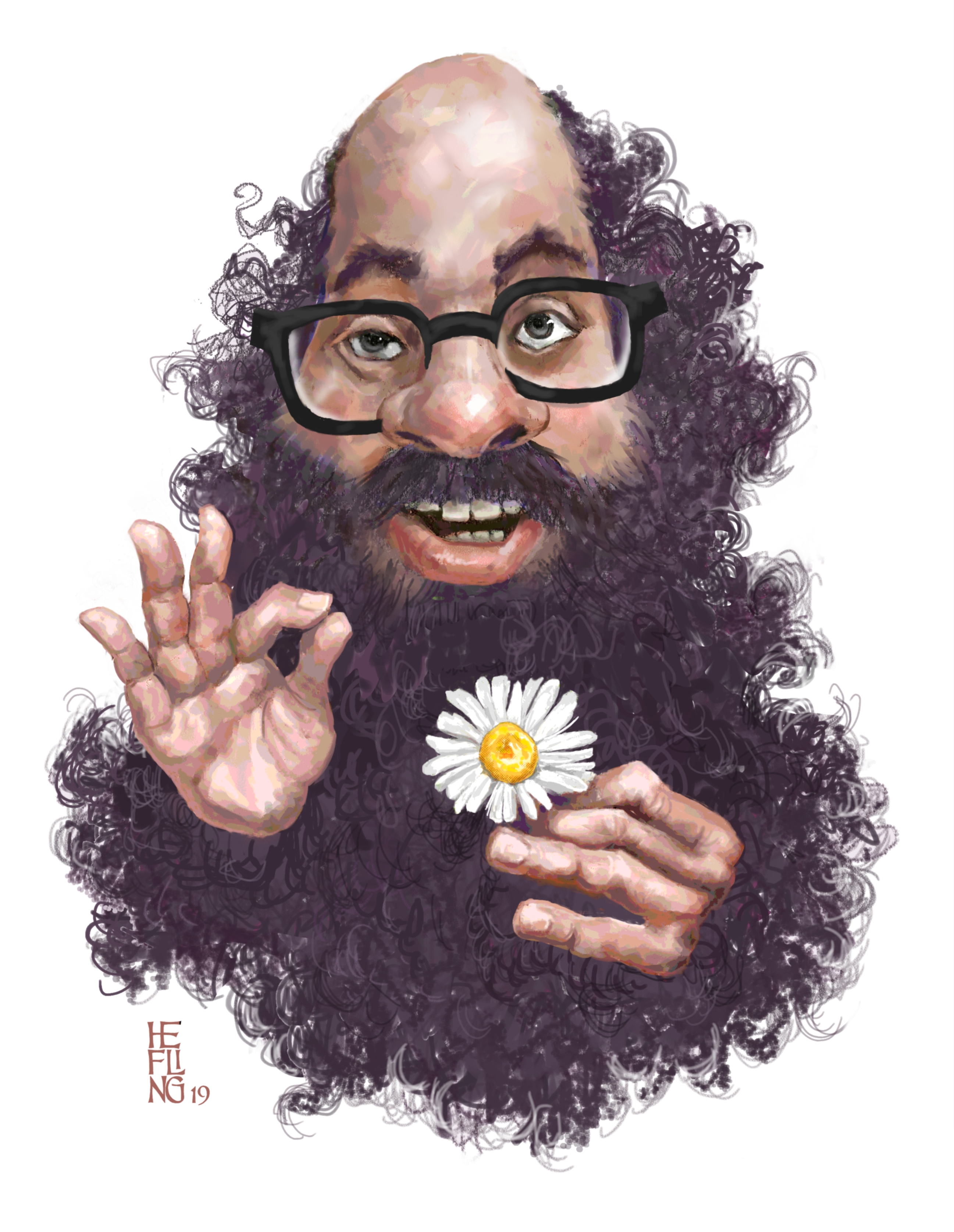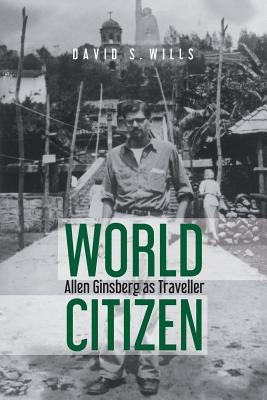IN WORLD CITIZEN, author David S. Wills conservatively estimates that Ginsberg visited as many as 66 countries in his lifetime. Using the poets letters, poems, travel diaries, and journals, Wills concludes that travel played a crucial role in Ginsberg’s discovery of his creativity and poetic voice.
The book is divided into four parts, each of which deals with one or several of the mind-bending trips that Ginsberg undertook during his life. We learn, for example, that his visit to Mexico provided the backdrop against which he conceptualized his most famous poem, “Howl”; and it was during his visit to France in 1958 that he was finally able to write his tragic elegy for his mother Naomi, titled “Kaddish.”
Along the way, Ginsberg met and befriended many if not all of the Beat writers: Jack Kerouac, Neal Cassidy, William S. Burroughs, Herbert Huncke, and his life partner  Peter Orlovsky, as well as hundreds of future ’60s luminaries, radicals, hippies, gurus, and artists. His travels led him to experiment with mind-altering drugs designed to expand and liberate his consciousness. It was after his visit to India in 1963 that he emerged as the longhaired, bearded, man-tra-chanting, finger-cymbal- and harmonium-playing mystic of the popular imagination.
Peter Orlovsky, as well as hundreds of future ’60s luminaries, radicals, hippies, gurus, and artists. His travels led him to experiment with mind-altering drugs designed to expand and liberate his consciousness. It was after his visit to India in 1963 that he emerged as the longhaired, bearded, man-tra-chanting, finger-cymbal- and harmonium-playing mystic of the popular imagination.
Ginsberg’s travels gave him a perspective on different cultures and their political systems. He learned to listen to the locals and how to befriend people even when he couldn’t speak their language. Politically, he came to realize that nationalism and the pressures of social conformity were pervasive challenges to world peace and individual freedom. His travels were essential not only for his poetry but also for his activism. His message of free love, cosmic consciousness, and world peace grew out of his experiences in different social milieus.
Wills suggests that there is a developmental pattern to Ginsberg’s creativity in relation to travel. He would take a journey and have some sort of revelatory experience about his travels, which would lead to poetic expression. Ginsberg wasn’t a tourist but rather a student of the world.
The book includes an excellent bibliography and an appendix that lists the countries and regions and dates of his visits. Wills’ approach to this Ginsberg biography is original in the way that it places travel at the core of Ginsberg’s vision. His final poem, “Things I’ll Not Do,” written days before he died in 1997, is offered as a statement of regret that he would not be able to visit places that he wanted to see, such as Bulgaria, Albania, Tibet, Egypt, Syria, and Afghanistan; and he would not be able to return to India, China, or Morocco. The poem’s final line suggests that he might see them “in an urn of ashes.”
In the tradition of his favorite poet, Walt Whitman, Ginsberg embraced multitudes. He was a cosmopolitan who abhorred the artificial barriers that separated people from each other. He was an authentic citizen of the world.







